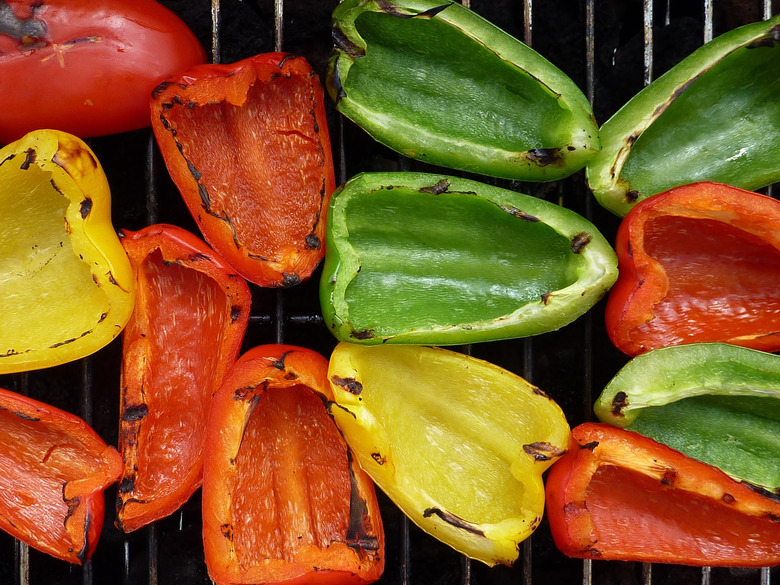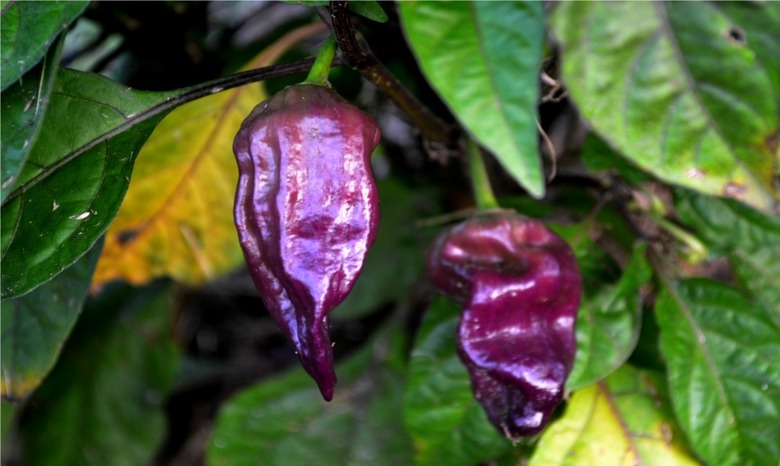Are Peppers Fruits Or Vegetables?
What Is Capsicum?
The question of whether peppers are fruits or vegetables has a straightforward yet complicated answer. According to the University of Georgia Extension, peppers (Capsicum spp.) are botanically a fruit but are classified culinarily and agriculturally as a vegetable because of how they are grown and how they are eaten.
Peppers may be complicated to classify, but they are easy to enjoy and simple to grow at home as long as you have a sunny garden bed with fertile, fast-draining soil.
Tip
Capsicum, or peppers, are botanically fruit but are culinarily and agriculturally vegetables.
How Are Peppers Both Fruits and Vegetables?
The notion that peppers are both fruits and vegetables may seem confusing, but it is actually pretty straightforward.
Fruit Characteristics of Peppers
Peppers are classified botanically as a fruit because the edible portion of the plant develops from a flower and contains seeds, explains the European Union Food Information Center.
Vegetable Characteristics of Peppers
Fruit is typically sweet tasting and is eaten as a snack or in desserts, while vegetables are typically eaten as a side dish to a main meal and skew toward savory, salty flavors. Peppers are eaten in a savory context, so they are considered a vegetable, culinarily speaking.
The world of agriculture and horticulture provides yet another classification for peppers. Peppers are grown as an annual crop unlike most fruit varieties, which are typically grown on a tree or a perennial plant, such as a bramble. For farmers, peppers are considered a vegetable crop.
So, finding out whether peppers are fruits or vegetables comes down to whom you ask and who is answering the question.
All About Pepper Cultivars
Roughly 23 species of peppers exist around the world, but all cultivated varieties come from just five of those species. The cultivated pepper species are Capsicum annuum, Capsicum frutescens, Capsicum chinense, Capsicum pubescens and Capsicum baccatum.
According to the UC Davis Agricultural Sustainability Institute, there are 2,000 to 3,000 cultivated varieties called cultivars that range from the mild bell pepper (Capsicum annuum) to the scorchingly hot Bhut Jolokia pepper (Capsicum frutescens x chinense 'Bhut Jolokia').
Capsaicinoids and the Scoville Heat Unit Scale
All peppers contain capsaicinoids, which are alkaline compounds that give peppers their spicy flavor. The amount or concentration of these compounds present in the flesh and membrane of the pepper determines how spicy the pepper will be.
The spiciness in peppers is measured and described using the Scoville Heat Unit Scale. The mildest peppers are sweet bell peppers, which have a Scoville rating of 0, while the Bhut Jolokia pepper has a Scoville rating of 1,000,000.
Growing Peppers at Home
- Peppers of all cultivars and varieties are warm-season crops that need plenty of sun, warmth and fertile soil to set a crop of fruit. The seeds can be started directly in the garden once soil temperatures warm to above 70°F with nighttime temperatures above 50°F.
- In most areas, it is a good idea to start the seeds indoors six to eight weeks before the last spring frost. Plant peppers in a location that receives 8 to 10 hours of sunlight each day. Avoid planting in areas where water pools after heavy rainfall.
- The University of Georgia Extension recommends amending the bed with 10-10-10 fertilizer applied at a rate of 2 pounds per 100 square feet of area. Work the soil to a depth of 6 to 8 inches.
- Space pepper plants 1 to 2 feet apart in rows spaced 3 feet apart, which will provide enough space for the plants to spread and enough space to walk between the rows.
- Spread a 2- to 3-inch-thick layer of mulch between the plants and provide 1 inch of water each week during the growing season.

